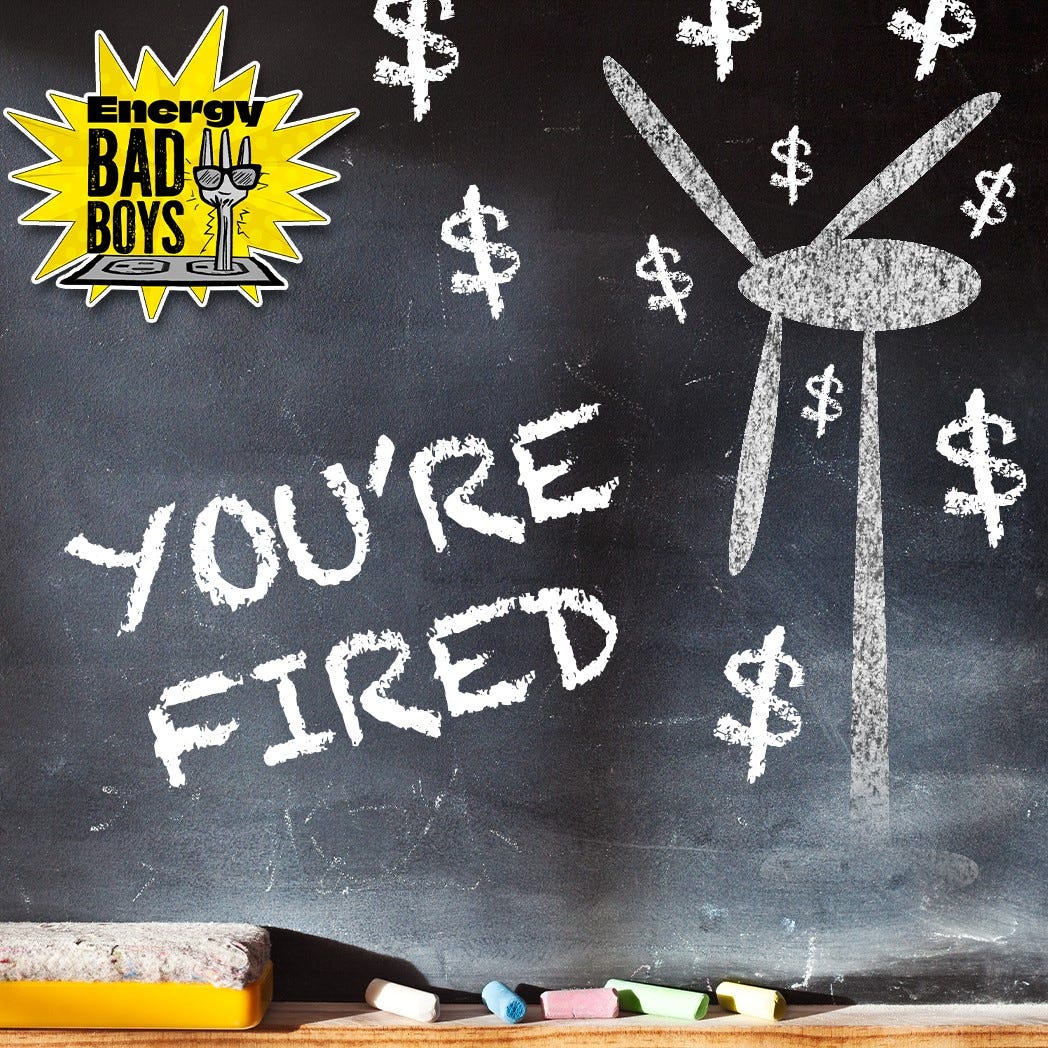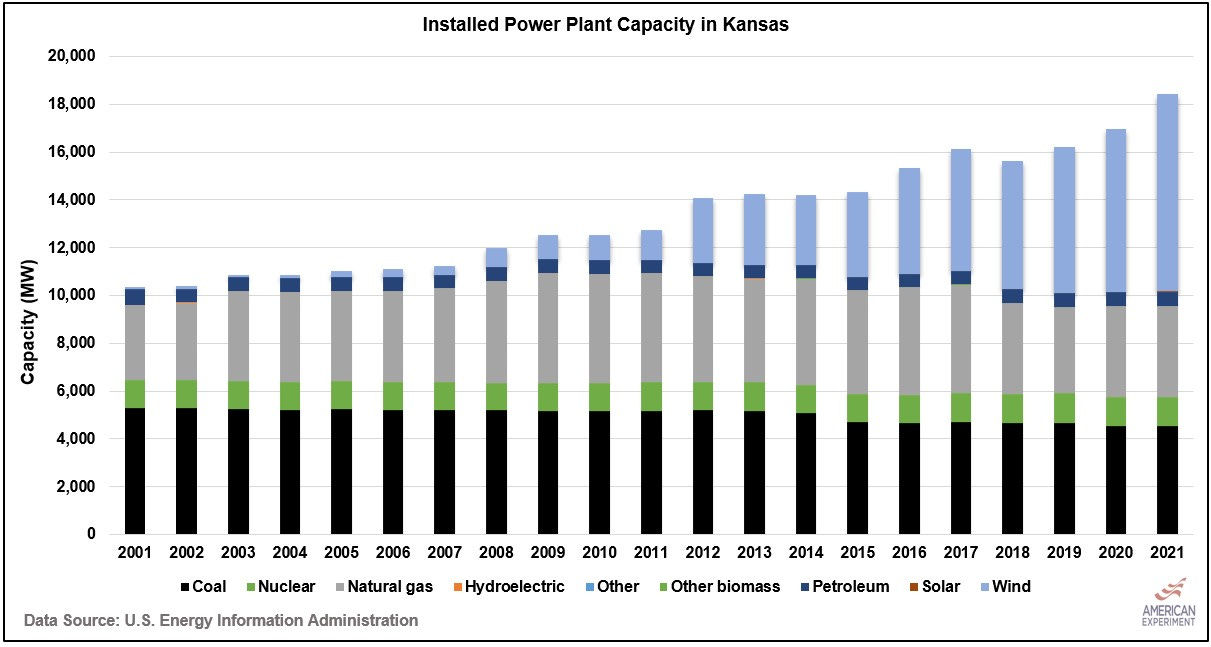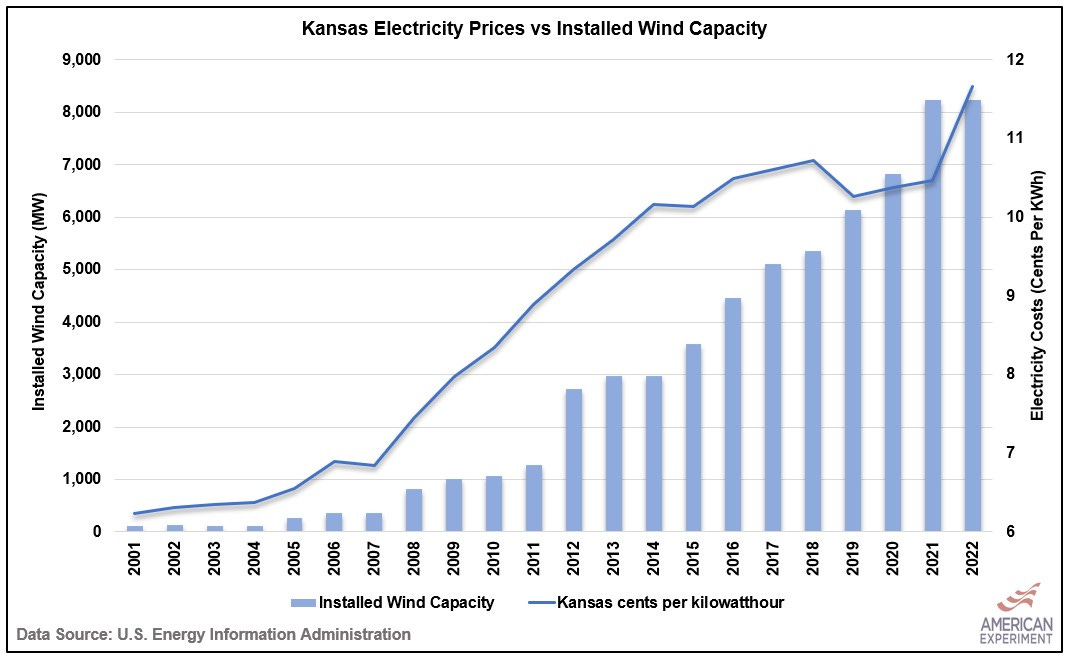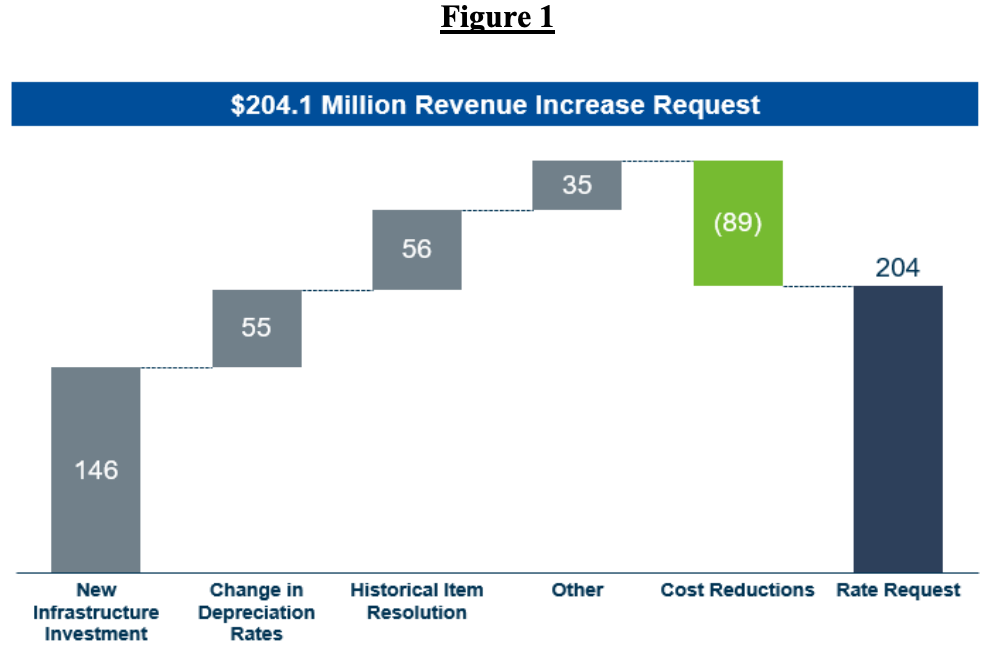The Wind Turbinator
Wind-driven energy cost increases lead Kansas schools to warn rising expenses could lead to teacher layoffs and larger class sizes.
No longer content to slay birds, bats, and possibly the endangered North Atlantic Right Whale, wind turbines have set their sights on new prey: The education of children in Kansas.
We’ve been predicting for years that rising electricity prices would inevitably negatively impact the education of American children by consuming ever-larger portions of school budgets, resulting in teacher layoffs, larger class sizes, fewer extracurriculars, or higher property taxes.
In Kansas, our predictions were proven out.
Evergy Energy’s worst-in-class rate hike
Earlier this year, Evergy Energy, the largest investor-owned utility in Kansas, requested to increase its electricity prices by 25 percent with the Kansas Corporation Commission (KCC), the government entity responsible for regulating the state’s electricity industry.
The prospect of soaring electricity prices prompted the Wichita public school district, the largest in the state, to file formal testimony with the KCC explaining how this massive increase in their operating expenses could make it more difficult to attract and retain teachers and other school staff, leading to larger class sizes. The De Soto school district told The Kansas City Star that its projected additional electric costs could pay for three to four teachers.
Announcements like these are probably shocking to the casual reader who incorrectly assumes wind and solar will cause energy prices to go down, but they are destined to become more common in the future because, after school staff, energy costs are often the largest expenses faced by school districts. In other words, energy expenses constitute a larger portion of school budgets than books, computers, and other school supplies.
Statistics from the Department of Energy show that schools spend over $8 billion on energy costs per year and account for 5 percent of commercial energy consumption. The Wichita school district spends approximately $8.5 million on electricity each year while serving 45,000 students. Increasing prices by 25 percent, or an additional $2 million, will leave the district with no good options for making up the difference, as the testimony filed by the Wichita School District details:
“The largest area of operating expenditures is personnel, so a likely consequence would be the inability to add and retain teachers and other school staff,” Wichita Public Schools Chief Financial Officer Susan Willis said in written testimony last month. “This would lead to increasingly larger class sizes and continued reduction of student services.”
Mary Sinclair, president of the Shawnee Mission Board of Education, told the Kansas City Star “absolutely” every additional dollar spent on utilities is a dollar that can’t be spent on teachers. The district in June estimated it will spend about $7.8 million on electricity during the current school year.
The Kansas City Star did an excellent job of describing the harmful effects that rising electricity prices have on schools, but it did not explain the cause. For more insight into this question, we need to dive into how electricity prices are set.
Why are prices rising? The process
Evergy Energy, although the largest investor-owned utility in Kansas, isn’t really a private company. It’s a government-approved, vertically integrated monopoly utility that has the exclusive right to sell electricity in its service territory.
Because Evergy’s customers are captured, meaning they have no choice but to buy their power from the monopoly, it would be unfair to let the company charge whatever it wishes for electricity. As a result, Evergy is allowed to adjust the price of electricity using a mathematical formula called the Cost-of-Service formula - a process regulated by the KCC.
The (not so) secret formula
While some people may flee at the sound of the word “formula,” this one is pretty simple to understand.
The Cost-of-Service formula essentially says that Evergy is allowed to charge enough for its electricity to cover the cost of providing the service to everyone in its service territory, plus a government-approved profit on top of what they build, as long as these expenses are approved by the KCC.
Required Revenue = Operating Costs + Allowed profit
For example, some expenses like fuel and labor are simply “passed through” to electricity customers, and the company makes no additional profit on these expenditures. When these expenses increase for the company, they will increase for the customer (eventually).
On the other hand, whenever Evergy builds a new power plant, whether it is a natural gas plant or a wind turbine, the company is allowed to raise the price of electricity to recoup the capital costs, plus a government-approved profit of 7.17 percent, based on Evergy’s weighted cost of capital. This means the more a utility company spends to build new things, the more profit it makes, and the more electricity prices go up for everyone.
This regulatory paradigm gives investor-owned utilities in vertically integrated markets a powerful incentive to “green-plate” their grids by building as much wind and solar capacity as possible to maximize their shareholder returns. It’s all a cynical cash grab meant to grab as much of your money as possible while pretending to care about saving the planet.
What this means for Kansas
Data from the U.S. Energy Information Administration (EIA) shows that there have been virtually no changes to the composition of the Kansas electricity grid since 2001, except for a massive buildout of wind capacity that began in 2004.
As you can see, the data show coal capacity has declined by 770 megawatts (MW) since 2001. while natural gas capacity increased by 661 MW. However, wind capacity grew from a rounding error in 2001 to 8,238 MW in 2021, making Kansas the fourth-largest state for wind turbine capacity. Wind now accounts for nearly 45 percent of the installed capacity on the Kansas grid.
Statistics from the Kansas Department of Commerce claim that more than $15 billion has been spent on the wind industry over the last 20 years. This massive growth in new spending has necessarily increased the cost of electricity.
EIA data show that electricity prices have risen sharply in concert with rising wind capacity, increasing 68 percent since 2007. It is important to note that companies like Evergy frequently receive approval to raise electricity prices before building new projects, which is why the increase in electricity rates occurs before the wind turbines are placed into service.
We are frequently told that “the wind is free” and that wind and solar are the cheapest forms of energy, but neither of these talking points are true.
As the graph below from the rate case shows, the largest driver of the rate increase request was “New Infrastructure Investment,” which the company notes was partly to "continue to transition the Company’s generation fleet to cleaner, more sustainable sources of energy."
Furthermore, the next largest driver of the rate increase request, “Change in Deprecation Rates,” was also due to the company’s ongoing commitment to the energy transition away from reliable fossil fuel power plants toward unreliable sources, as the company notes in the filing about the changes:
[The changes are] a recognition that the transition to cleaner generating resources is advancing and that fossil plant retirements are anticipated to occur earlier than projected in the depreciation rates currently in effect.
[Emphasis added]
We also received reader feedback arguing that factors like transmission spending and rising interest rates also play a role in rising electricity prices. However, these arguments help prove our point because you don’t need to build as much additional transmission infrastructure if you’re not building wind turbines, and rising interest rates don’t affect assets that are largely depreciated, like the existing coal, nuclear, and natural gas plants on the Kansas system, they affect new builds, like wind turbines.
Conclusion
We haven’t seen any other school districts that have filed testimony with utility regulators explaining how rising electricity prices will result in teacher layoffs or larger class sizes, but the huge sums of money spent on wind or solar will not appear out of thin air, they will be paid for families, hospitals, and schools in the form of higher energy prices and/or reduced services.
All of these consequences were entirely foreseeable, and it is ironic that many of the *smart* people who are the most in favor of building solar panels and wind facilities also claim to care the most about the education of America’s children.
If these people care about schools as much as they claim to, they sure have a dumb way of showing it.
This article was edited from its original copy to include a link to the company’s original rate increase request.









That those in the education system gets the boot may well be poetic justice, considering where larky environmental policies are taught. Too many people involved in the electrical grid have remained silent in the face of watching a 'Rube Goldberg' scheme milk the electrical energy customers. When the silliness of supporting green energy turns everyone cold, maybe sanity will return to a world gone mas.
From the Kansas City Star article you linked:
> The company has requested a 25% increase in the revenue it collects from educational customers in its Kansas central region and a roughly 2% net increase among all customers in its Kansas metro region.
Why did the utility increase rates for schools (25%) so much more than for the average customer (2%)?